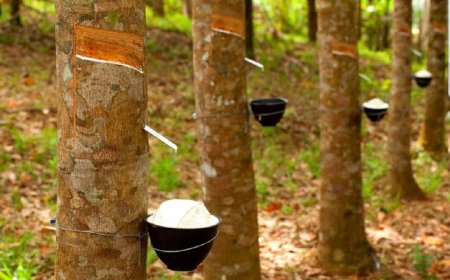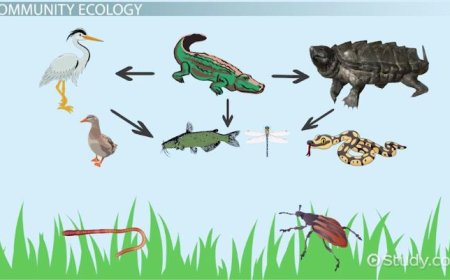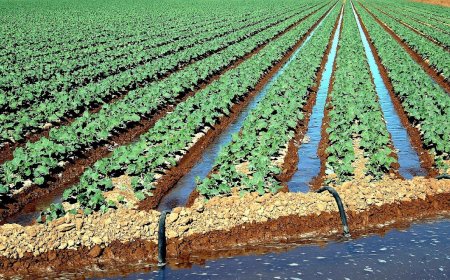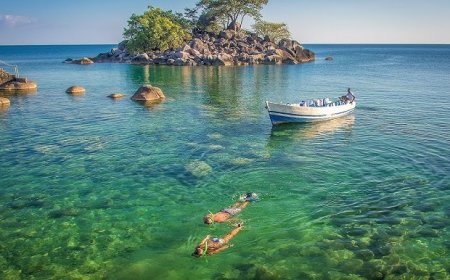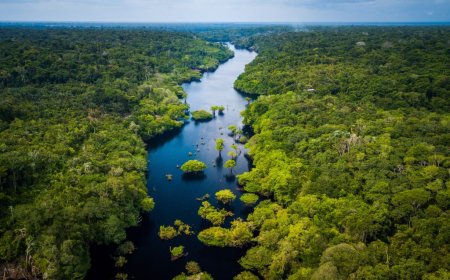How Does Plate Tectonics Shape the Earths Surface
Discover how plate tectonics shape Earth's surface through processes like earthquakes, volcanic activity, mountain formation, and continental drift. Learn how these forces continuously reshape our planet over millions of years.
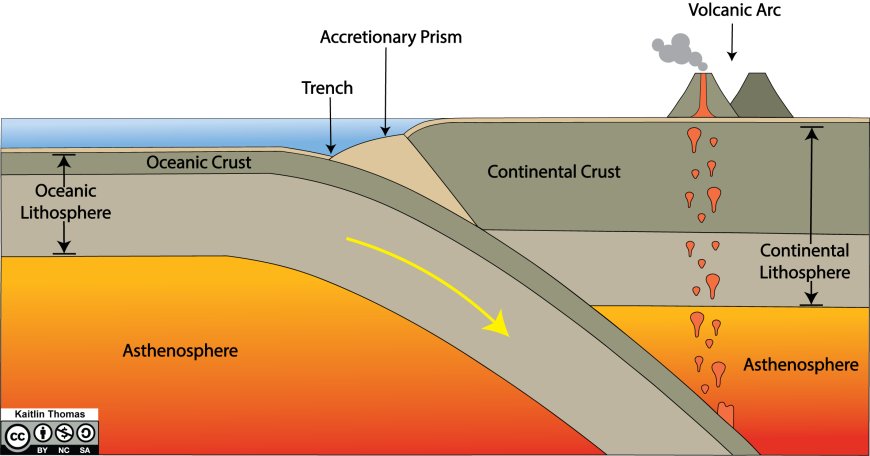
Plate tectonics is a scientific theory that explains the dynamic processes shaping the Earth's surface through the movement of large tectonic plates across the planet's lithosphere. These plates float atop the semi-fluid asthenosphere and interact at their boundaries, leading to a range of geological phenomena, including the formation of mountains, earthquakes, and volcanic activity. The theory emerged in the mid-20th century, building on earlier concepts such as Alfred Wegener's continental drift, and has since revolutionized our understanding of Earth's geology and its evolutionary history.[1][2][3]
The movement of tectonic plates is driven by various mechanisms, including mantle convection, slab pull, and ridge push. These processes not only shape the landscape but also influence ecological systems and climate patterns. For instance, the collision and subduction of plates can create mountain ranges, like the Himalayas, while diver- gent boundaries generate new oceanic crust, as seen at mid-ocean ridges.[4][5][6] The tectonic activity also significantly impacts the environment, affecting water sys- tems, ecosystems, and long-term climate trends, illustrating the interconnectedness of geological and biological processes on Earth.[7][8][9]
While plate tectonics is widely accepted in the scientific community, the complexities of its mechanisms and consequences remain a subject of ongoing research. Con- troversies often arise around specific geological events and their interpretations, as well as the implications of human activities exacerbating natural processes. Under- standing these dynamics is crucial not only for advancing geological knowledge but also for addressing contemporary challenges, such as resource management and disaster preparedness in seismically active regions.[10][11][12]
In summary, plate tectonics is a fundamental framework for understanding Earth's surface processes, highlighting the intricate relationship between geological forces and environmental changes. The continued study of plate tectonics promises to unveil further insights into the planet's history and inform strategies for managing natural disasters and conserving ecosystems in the face of ongoing change.[13][14][15]
Historical Background
The historical development of the plate tectonics paradigm has its roots in earlier geological theories, notably the concept of continental drift proposed by Alfred Wegener in the early 20th century. Wegener's idea, first presented in his seminal work "The Origin of Continents and Oceans" in 1915, suggested that the continents were once part of a single supercontinent, Pangea, which gradually drifted apart over geological time. He based his hypothesis on a variety of geological and paleontological evidence, including the striking similarities in fossil records and rock formations across now-distant continents like South America and Africa[1][2][3].
Before the acceptance of plate tectonics, palaeogeographic studies primarily focused on documenting the distribution of land and sea based on fossil content and rock for- mations, rather than exploring the movement of continents themselves. The earliest known scientific palaeogeographic map was created by Jean Honoré Robert de Paul de Lamanon in the late 18th century, which illustrated the extent of a prehistoric lake in Paris based on vertebrate fossils found in gypsum deposits[4]. This initial work laid the groundwork for future palaeogeographic mapping and understanding of Earth's past environments.
Wegener’s continental drift theory faced skepticism from the scientific community, primarily because he could not provide a convincing mechanism for how continents could drift across the Earth's surface. However, in the 1940s to 1960s, advancements in geophysical research, particularly during the Cold War, began to provide new insights into Earth's geology. Key figures such as Harry Hess and Robert S. Dietz contributed significantly to this evolving understanding. Hess proposed the concept of seafloor spreading, which revealed that new oceanic crust was being formed at mid-ocean ridges, suggesting a dynamic process of ocean floor renewal that could facilitate continental movement[3][5].
By the 1960s, researchers including John Tuzo Wilson began to synthesize the ideas of continental drift and seafloor spreading into a cohesive theory known as plate tectonics. This comprehensive framework posited that the Earth's lithosphere is divided into tectonic plates that float on the semi-fluid asthenosphere beneath, driven by convection currents from the Earth's core. The interactions of these plates at their boundaries explain various geological phenomena, including the formation of moun- tain ranges, earthquakes, and volcanic activity, thus reshaping our understanding of the Earth’s surface over geological time[6].
Types of Plate Boundaries
Plate boundaries refer to the zones where two or more tectonic plates meet, and they play a crucial role in geological processes such as earthquakes, volcanic activity, and mountain formation. There are three main types of plate boundaries: divergent, convergent, and transform, each characterized by distinct movements and geological features.
Divergent Boundaries
Divergent boundaries occur where tectonic plates move away from each other. This separation allows magma from the mantle to rise and create new crust as it cools and solidifies. These boundaries are commonly found along mid-ocean ridges, where seafloor spreading takes place, resulting in the formation of new oceanic crust. The Mid-Atlantic Ridge is a prominent example of a divergent boundary[7][8]. On land, divergent boundaries can create rift valleys as the lithosphere is pulled apart, leading to geological features like the East African Rift Zone[9].
Convergent Boundaries
Convergent boundaries form where tectonic plates collide or move toward one another. This type of boundary can produce significant geological activity, including earthquakes and volcanic eruptions, as well as mountain-building processes.
Oceanic-continental convergence: An oceanic plate subducts beneath a continental plate, leading to the formation of deep oceanic trenches and volcanic mountain chains. The Andes Mountains in South America exemplify this type of boundary[7][9].
Oceanic-oceanic convergence: Here, one oceanic plate subducts beneath another, creating volcanic island arcs and deep trenches, such as the Mariana Islands and the Aleutian Islands[2].
Continental-continental convergence: This occurs when two continental plates col- lide, resulting in the uplift of the land and the formation of mountain ranges like the Himalayas and the Alps. Neither plate is subducted due to their similar densities, which leads to intense compression and folding of the crust[2][7].
Transform Boundaries
Transform boundaries, also known as conservative boundaries, are characterized by two tectonic plates sliding past one another horizontally. In this case, lithosphere is neither created nor destroyed. The movement can be either sinistral (left lateral) or dextral (right lateral), as observed in the San Andreas Fault in California, which exhibits dextral motion[2][3]. Transform boundaries often produce strong earthquakes due to the stress accumulated along the fault lines. These boundaries can create linear features on the Earth's surface, such as valleys or ridges, and are typically marked by a series of parallel faults or fractures in the lithosphere[9][3].
Mechanisms of Plate Movement
Plate tectonics is fundamentally driven by several interrelated mechanisms that dictate the movement of tectonic plates across the Earth's surface. The primary processes responsible for this movement include mantle convection, slab pull, ridge push, and the effects of gravitational forces.
Mantle Convection
Mantle convection is the process by which heat is transferred from the Earth's core to the surface through the movement of molten rock within the mantle. This process is characterized by the slow, circular movement of mantle material driven by the intense heat from the Earth's core, which originates from both the planet's formation and ongoing radioactive decay. As hot, less dense mantle material rises towards the surface, it cools, becomes denser, and sinks back down, creating a continuous cycle of rising and sinking material known as mantle convection. This process plays a crucial role in shaping the Earth's surface and driving geological phenomena such as earthquakes and volcanic activity[10][11][12].
Slab Pull
Slab pull is a significant force associated with the subduction of oceanic lithosphere. As older, colder oceanic plates sink into the mantle due to their higher density compared to the surrounding mantle, they exert a pulling force on the rest of the tectonic plate. This negative buoyancy not only contributes to the movement of
the plate but also drives metamorphic processes within the subducting slab as it descends under increasing pressure and temperature. The first transformation of the descending materials is referred to as eclogitisation, leading to denser mineral structures[13][14][15].
Ridge Push
Ridge push is another key mechanism contributing to plate movement, occurring at mid-ocean ridges where new oceanic crust is formed. Here, the rising mantle material reduces pressure, allowing it to melt and form new crust. As the oceanic lithosphere moves away from the ridge, it cools and becomes denser, resulting in gravitational sliding down the slope created by the mid-ocean ridge. This sliding action produces a force that effectively pushes the tectonic plates away from the ridge[11][12][14].
Gravitational Forces
In addition to these primary mechanisms, the Earth is also affected by gravitational forces from celestial bodies, such as the sun and the moon. These forces can cause small yet measurable changes to the Earth's shape and surface movements, influencing oceanic tides and plate movements indirectly[14].
Effects of Plate Tectonics on Earth's Surface
Plate tectonics plays a fundamental role in shaping the Earth's surface through various geological processes. This scientific theory posits that the Earth's outer shell, or lithosphere, is divided into large slabs of solid rock known as tectonic plates, which float over the more malleable layer of the mantle beneath them[16][17]. The interactions of these plates lead to significant geological features and events that transform the landscape.
Mountain Formation
One of the most notable effects of plate tectonics is mountain formation. Mountains can form primarily through three different mechanisms: the collision of tectonic plates, volcanic activity, and the compression of rock layers. When two tectonic plates con- verge, one plate may be forced beneath the other in a process known as subduction, leading to the uplift of material and the formation of mountain ranges[18][19]. For instance, the Himalayas, including Mount Everest, were formed from the collision between the Indian Plate and the Eurasian Plate, resulting in significant geological uplift that continues to this day[19].
Types of Mountains
Mountains can be categorized into different types based on their formation processes:
Fold Mountains: These are formed through the compression of rock layers, result- ing in folds and thrusts in the Earth's crust. The Appalachian Mountains and the Himalayas are prominent examples of fold mountains[20].
Volcanic Mountains: Formed by volcanic activity, these mountains arise from the accumulation of magma and ash that solidify over time. Notable examples include Mount Fuji in Japan and Mount Kilimanjaro in Africa[20].
Fault-Block Mountains: These mountains are created by the movement of large blocks of the Earth's crust, resulting in uplift and displacement along fault lines. This can happen due to tension forces acting on the Earth's crust[19].
Earthquakes and Volcanism
Another critical effect of plate tectonics is the occurrence of earthquakes and volcanic activity. Most earthquakes are concentrated along plate boundaries, where the move- ment of tectonic plates generates friction and stress[21]. As plates slide past one another, the release of energy can lead to significant seismic events. For instance, the mid-ocean ridges, which mark divergent boundaries, are characterized by frequent earthquakes and volcanic activity as tectonic plates pull apart, allowing magma to rise and create new crust[8].
Ocean Floor Features
Plate tectonics also shapes the features of the ocean floor. The movement of tectonic plates results in the formation of various underwater geological structures, including mid-ocean ridges, deep-sea trenches, and seamounts. Mid-ocean ridges, which are elevated features formed by the upwelling of magma, create the longest continuous mountain range on Earth[8]. In contrast, deep trenches are formed where one tectonic plate subducts beneath another, resulting in some of the deepest parts of the oceans, such as the Mariana Trench[22].
Erosion and Landscape Evolution
The effects of plate tectonics are further complemented by erosion and weathering processes. As mountains rise due to tectonic activity, they are subjected to erosion by wind, water, and ice, which can sculpt and alter their shape over time[19]. This interplay between tectonic uplift and erosion contributes to the dynamic evolution of landscapes on Earth.
Impact on Climate and Environment
The movement of tectonic plates significantly influences both climate and environ- mental conditions on Earth. This section explores the various mechanisms through which plate tectonics affects ecological systems and climatic patterns.
Ecosystem Disruption
Earthquakes and volcanic eruptions, which are direct outcomes of tectonic activity, can lead to the disruption of ecosystems. Habitat destruction occurs due to ground deformation, landslides, and tsunamis, threatening biodiversity in the affected re- gions. These events can result in the immediate death or displacement of numerous species, while the long-term impacts hinge on the ecosystem's recovery capability and the extent of the initial damage. For instance, fragmentation of habitats can disrupt gene flow, potentially leading to population declines over time[23].
Alteration of Water Systems
Tectonic movements can also lead to significant changes in water systems, impacting aquatic life. Variations in water levels and flow rates can adversely affect fish popu- lations, amphibians, and other aquatic organisms. Furthermore, changes in water salinity can have profound effects on both vegetation and soil composition, adding additional stress to ecosystems[23].
Effects on Climate
The alteration of Earth's topography due to plate tectonics can influence regional climate. Changes in land elevation, for example, can affect local temperature and pre- cipitation patterns. This is evident in mountainous regions, where the uplift of ranges like the Himalayas can modify atmospheric circulation and enhance monsoonal effects, resulting in increased rainfall on the windward slopes[24]. The formation of new lakes or changes to existing bodies of water can create microclimates, further affecting local humidity levels and weather conditions[23].
Moreover, tectonic activities can release greenhouse gases, such as methane, which contribute to shifts in both regional and global climate patterns. Although these geo- logical emissions are typically less impactful than human activities, they nonetheless play a role in altering the climate[23].
Long-Term Climate Patterns
The gradual movement of tectonic plates is also responsible for influencing ocean currents and global climate over geological timescales. Historical events, such as the closure of the Isthmus of Panama, dramatically altered ocean circulation patterns and thus impacted climate and marine biodiversity[25]. Additionally, processes like glaciation and volcanic activity contribute to changes in atmospheric composition, thereby affecting long-term climate trends. For instance, the rise of mountain ranges can lead to increased chemical weathering, which lowers atmospheric CO2 concen- trations, potentially driving global cooling[26].
Human Influence
In modern contexts, human activities—such as deforestation and fossil fuel combus- tion—exacerbate climate changes initiated by tectonic processes. These activities result in significant shifts in temperature and precipitation patterns, further disrupting ecological balances and threatening species unable to adapt rapidly[25][27]. The intersection of natural tectonic processes and anthropogenic impacts presents com- plex challenges for biodiversity and climate resilience[28][27].
Future of Plate Tectonics Research
The future of plate tectonics research is poised for significant advancements, dri- ven by both technological innovations and the increasing necessity to understand the Earth's dynamic processes. As global populations grow and industrialization expands, the demand for mineral and energy resources continues to escalate, necessitating a deeper exploration of previously inaccessible regions such as the ocean floor and polar continents[29]. This growing demand highlights the critical need for improved knowledge regarding the relationship between plate tectonics and natural resources, which is essential for sustainable development and environmental protection[29].
Technological Advancements
Recent advances in geodesy, including ground-based and satellite-based measure- ment techniques, have greatly enhanced our ability to track current plate movements with precision. Techniques such as very long baseline interferometry (VLBI), satellite laser ranging (SLR), and the Global Positioning System (GPS) are now widely used for measuring tectonic activity across vast distances[30]. The integration of sophisticated algorithms, machine learning, and satellite technology has improved the analysis of seismic data and ground deformation, offering invaluable insights into underground movements and tectonic interactions[31].
Interdisciplinary Collaboration
Future research in plate tectonics will benefit from interdisciplinary collaboration, merging fields such as geophysics, structural engineering, and environmental sci- ence. By pooling expertise from various disciplines, scientists and engineers can de- velop innovative solutions to mitigate the risks posed by tectonic activity, particularly in seismic zones. For instance, advancements in structural engineering aim to bolster buildings against seismic forces, which could significantly reduce the potential for catastrophic failures during earthquakes[31].
Importance of Continued Exploration
As research continues to unveil the complexities of plate boundaries, understanding their interactions will not only be an academic pursuit but also crucial for practical
applications, including disaster preparedness and resource management[32]. The ongoing exploration of plate tectonics will play a vital role in predicting natural disasters, thereby enhancing our ability to protect human populations and preserve environmental integrity[32].
References
[1] : When Continental Drift Was Considered Pseudoscience
[2] : Plate tectonics - Wikipedia
[3] : 5.8: Plate Tectonics - Geosciences LibreTexts
[4] : A historical account of how continental drift and plate tectonics ...
[5] : GEOL 104 The Living Earth: Plate Tectonics and Ecology - UMD
[6] : Continental drift | Definition, Evidence, Diagram, & Facts | Britannica
[7] : Plate Boundaries - Definitions & FAQs | Atlas
[8] : 1A.3 Divergent Boundaries – Environmental Geology
[9] : Plate Tectonics ,Plate Boundaries and Hotspot Explanation - Geology Science [10]: Mantle Convection on Earth – Definition & Detailed Explanation ...
[11] : What Causes Tectonic Plates to Move – Geology In
[12] : Mantle Convection: Explained & Causes - StudySmarter
[13] : Plate Tectonics - Understanding Global Change
[14] : What drives plate tectonics? - Metageologist - All-geo
[15] : Plate Driving Forces and Tectonic Stress - websites.umich.edu
[16] : Tectonic Landform - Plate Tectonics, Landform Evolution and FAQs - Vedantu
[17] : Plate Tectonics: Definition, Theory, Types, Facts, & Evidence
[18] : Mountains - World Landforms
[19] : Mountain Formation: How Are Mountains Created?
[20] : How Hills and Mountains Are Formed Where Are Mountains Found - MidGeo.Com
[21] : Tectonic Plates - Science Notes and Projects
[22] : 1.1 Discovering Plate Tectonics - Open Education Alberta
[23] : How Do Earthquakes Impact the Environment?
[24] : 5.13: Climates and Tectonics - Geosciences LibreTexts
[25] : Continental Dynamics: Geology, Climate, and Biodiversity
[26] : How Does the Movement of Plate Tectonics Affect Climate Change? - BrightHub
[27] : How Continental Positioning affects Climate: Part I – Plate Tectonics ...
[28] : 12.12: Causes of Long-term Climate Change - Geosciences LibreTexts
[29] : Plate tectonics and people [This Dynamic Earth, USGS] [30]: Understanding plate motions [This Dynamic Earth, USGS]
[31] : Understanding Earthquakes and Their Environmental Impact: Risks ...
[32] : Types Of Plate Boundaries: Divergent, Convergent, And Transform


